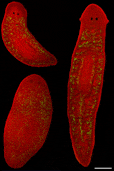2000
Journal Publication
Developmental Biology
Bromodeoxyuridine Specifically Labels the Regenerative Stem Cells of Planarians
Newmark PA, Sánchez Alvarado A
The singular regenerative abilities of planarians require a population of stem cells known as neoblasts. In response to wounding, or during the course of cell turnover, neoblasts are signaled to divide and/or differentiate,thereby replacing lost cell types. The study of these pluripotent stem cells and their role in planarian regeneration has been severely hampered by the reported inability of planarians to incorporate exogenous DNA precursors; thus, very little is known about the mechanisms that control proliferation and differentiation of this stem cell population within the planarian. Here we show that planarians are, in fact, capable of incorporating the thymidineanalogue bromodeoxyuridine (BrdU), allowing neoblasts to be labeled specifically during the S phase of the cell cycle. We have used BrdU labeling to study the distribution of neoblasts in the intact animal, as well as to directly demonstrate the migration and differentiation of neoblasts. We have examined the proposal that a subset of neoblasts is arrested in the G2 phase of the cell cycle by double-labeling with BrdU and a mitosis-specific marker; we find that the median length of G2 (~6 h) is sufficient to account for the initial mitotic burst observed after feeding or amputation. Continuous BrdU-labeling experiments also suggest that there is not a large, slow-cycling population of neoblasts in the intact animal. The ability to label specifically the regenerative stem cells, combined with the recently described use of double-stranded RNA to inhibit gene expression in the planarian, should serve to reignite interest in the flatworm as an experimental model for studying the problems of metazoan regeneration and the control of stem cell proliferation.
Address reprint requests to: Alejandro Sánchez Alvarado



